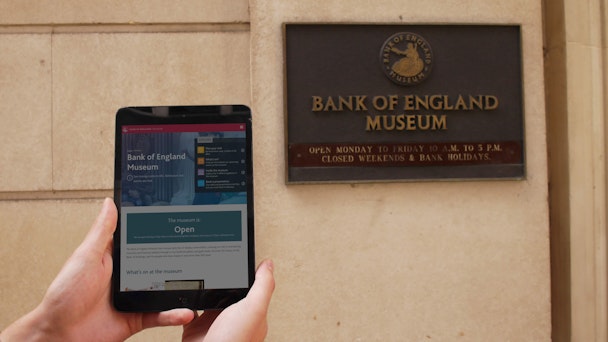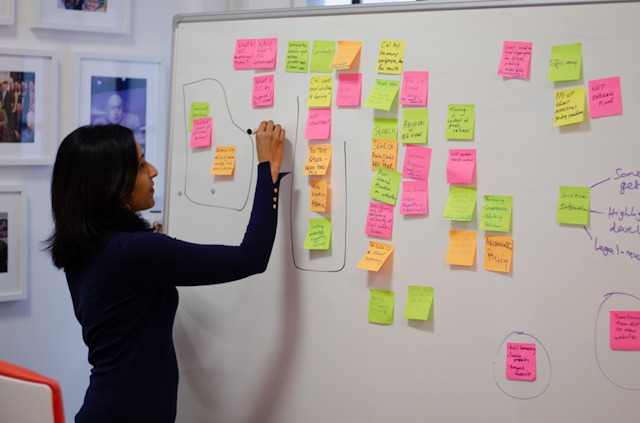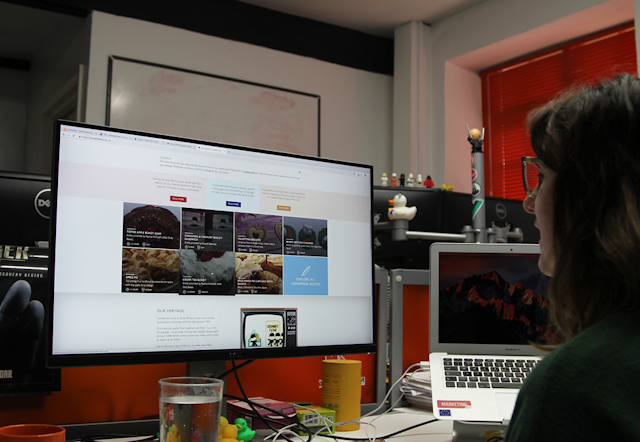Five steps to a user-centric website - it takes commitment, creativity and experience
Yes, it’s easy to aspire to a user-centred redesign, but not so easy to achieve in practice. Here’s a process to help you, with some tips from some industry legends.

It takes commitment, creativity and experience (and probably a lot of Post-Its), but these steps will deliver your business goals – and create a site your users will love.
1. Set your hypothesis
Every user-centric site starts by asking: who are we designing for, and why?
A preliminary research phase will help you consider:
- Why you need this
- What you want to achieve
- Who’s involved
- How you can make it happen

Then consider any internal constraints. Think about your budgets and resource versus the changes you’d like to make. Are you ready for a redesign or could a revamp meet your needs? Are you rebranding? Have you reviewed your tech stack? What potential does new technology offer your business?
Website redesigns should be considered through multiple lenses: business, sales, HR, creative, technological and even psychological.
Build your case internally, then create a brief:
With your stakeholders, set and prioritise aligned, data-informed, SMART business objectives for the new site. Agree the management and decision-making hierarchy. Clear project governance will smooth the rest of the project. Combine these elements into a one-page brief. It’ll be the guiding light for your agency partner and internal team.
Audit your current situation:
- What can your data reveal about your customers’ wants, needs, likes, dislikes? Where are the blocks in their journeys?
- Audit your content and features on and offsite. Log how they perform and any gaps.
- Does your branding connect with your target customer? Is it effective?
- Conduct a competitor audit. What are they doing well – and not so well?
2. Position your redesign for success
Your approach to the project will be fundamental to its success or failure.
Build your team:
Select the internal people and agency partners who can deliver success.
In-house development offers brand integration and alignment. Agencies provide premium industry talent with the added bonus of vertical experience. Choose an agency who’ll blend with, and upskill, your team bringing in valuable lessons from other industries.
Likewise, when hiring new people, you would do well to borrow a trick or two from Google. They use cross-business hiring committees to decide on who to bring on board as chances are that the people you will hire will work across multiple managers and departments.
Take an agile approach:
Agile and lean methodologies embrace flexible and changing requirements, so you can adapt to customer needs whilst being ready to challenge your competitors. One key challenge is trying to shoehorn Scrum (a popular form of agile) into projects and organisations that cannot or will not accept it. The good news is that you can still borrow from agile and enjoy its benefits without being fully wedded to it.
Whichever methodology you use for your project, go to the ‘shop floor’ and see for yourself how it works. Your thinking and approach might need tweaking. As Jeffrey Liker, the author of The Toyota Management System said “Go and see for yourself to thoroughly understand the situation.” Always ensure that processes are secondary to delivering the actual work and are there to support production, not to hinder it.
Data-informed UX:
Quantitative (the what, when and where) data alone can misrepresent your customers’ needs. User-centred design adds qualitative data from customer research to build a holistic picture including the ‘how’ and the ‘why’. Combine the quantitative with the qualitative to succeed and build meaningful insights. From A/B tests, to surveys and focus groups always ensure that all your data points are representative of your audience.
Avoiding confirmation biases from other stakeholders is also going to be key to making the right decisions. As Daniel Kahneman author of Thinking, Fast and Slow said “…when people believe a conclusion is true, they are also very likely to believe arguments that appear to support it, even when these arguments are unsound.”
New or existing tech-stack?
Don’t let your techstack restrict you: remember that before people drove cars, they planned journeys around their horses. Part of selecting the right techstack is knowing what innovative capabilities technology can deliver and how these benefits can aid your business and users. And it’s great if something is sexy and shiny, but remember it also needs to be robust and secure.
Andrew Ng, Professor of AI at Stanford University said that “deep-learning will transform every single industry from travel, to healthcare...”If you are considering on using any form of automation, personalisation and AI in your business now has never been a better time to consider it. You will then need to conduct a data analysis project to work out what you need to do data wise.
Regardless if you use AI or not, when conducting redesign projects you will almost certainly need to consider technical data migrations. This is significant piece of work from our experience and require runbooks, betas, the right type of hosting environments and more.

If you decide that you need to elect a new techstack, consider new measurement plans that include new KPI and OKR monitoring and reporting tools. Likewise, improved analytics can also better reveal user behaviour and opportunities. One lesson is not to follow what everyone else is doing or saying. Jared Spool, one of the world’s leading user behaviour analysts, claimed that Net Promoter Scores (NPS) are the “ecstasy of business metrics”. Jared claimed, among many things, that the key NPS question is flawed as it focuses on future behaviour as opposed to past or present behaviour.
3. Running with the project
Test as you go:
User-centred websites are tested at each iterative step. Build the user stories and data processing logic at the beginning and ensure they are written into the wireframes and functional specifications so all are aware of the ‘testable’ business logic.
Whilst it is easy to say this, creating a testing first culture is a challenge. Robert C Martin (also known in the industry as Uncle Bob, one of the original QA engineers) emphasised the importance of not letting bugs into production. He famously said software professionals would write their employers checks for every bug they let through.
Whilst it’s probably a bit of a distortion from real world business, the point is clear. It is technically impossible to be totally bug free, but to be fully user centric you will need to ensure everyone is fully accountable.

5 ways to mitigate risk with the right QA processes:
- Build a culture of quality code and QA accountability.
- Write user stories and data processing flows upfront so the business logic is understood by the entire team.
- Agree how sign-off and change control will work.
- Consider accessibility and device compatibility requirements from the start
- Clarify and agree the technical architecture.
- Follow test-driven development – write the tests the product must pass before it’s coded.
Content migration:
Create your content strategy early, so you can fill any content gaps. Ensure legacy content can be imported or linked. Factor in SEO, accessibility and metadata and check your CMS supports any change in process.
Abby Cover is the author of ‘How to Make Sense of Every Mess’, a key book highlighting how to handle content strategies and new information systems. She famously said that: “Getting everyone involved early is crucial. Every step you take should come from the direction you choose together. If you don't get agreement up front, prepare for more work later. When you see the world through the eyes of other people, you can spot weaknesses and opportunities for improvement. Don't hide from other stakeholders or wait until the end of the project to talk to users.”
This quote couldn’t be more true today. To really succeed with content, you have to involve everyone.
Keep communication open:
Frequent agency and team check-ins stop you heading down the wrong path. Think agile: the earlier issues are spotted, the cheaper they are to fix.
4. Preparing for launch
A measurement plan should baseline your statistics across launch, so you know you’re hitting your key KPIs.
Set up and test any third-party facilitators like PayPal well ahead, so you know they’re working. You don’t want them to derail your launch.
A runbook documents all your technical procedures as you switch to new systems so you can roll back if something goes wrong.
You must have simulations and story scripts ready to test multiple permutations of scenarios across production, testing and live environments.
User acceptance testing throughout launch and post-launch will provide qualitative feedback on what’s working and what isn't.
5. What to do after
Measure your new site’s key KPIs and or OKRs and watch out for any anomalies in the data as you iterate.
And remember: Launching a new website is a bit like moving home. You’ll miss some of the quirks in your old house. That’s fine. Rome wasn't built in a day. Just believe in your new home and improve each area week by week.
Download our free UX Handbook if you’d like more practical advice on how to redesign a truly user-centred website.
Danny Bluestone, founder and CEO of Cyber-Duck.
Content by The Drum Network member:

Cyber-Duck
Established in 2005, Cyber-Duck is a leading digital agency that works with exciting startups and global brands such as Cancer Research Technology, The European...
Find out more
